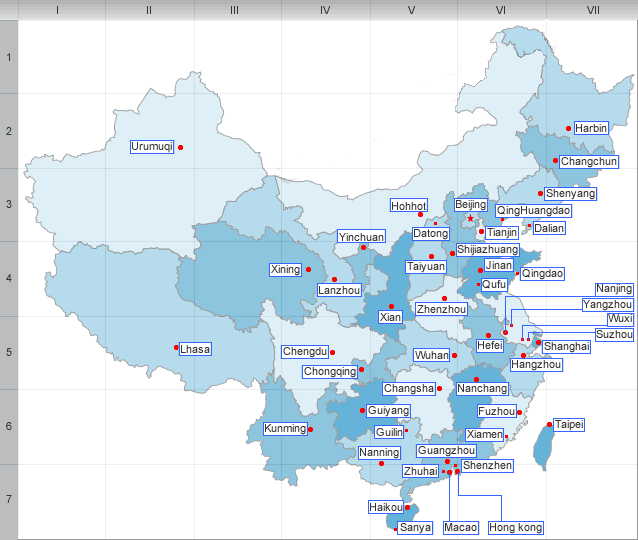Lanzhou Municipality Overview
The city of Lanzhou , Gansu Province, marks the southeasternmost ancient Silk Road city along the equally ancient Hexi ("Western rivers") Corridor, a reference to the river basins of the Jin and the Wei Rivers - both tributary rivers to the upper reaches of the Yellow River - that form the valley floor that is the Hexi Corridor, which corridor roughly corresponds to the narrow, "bottleneck" stretch of present-day Gansu Province and which separates the Gobi Desert to the north and east from the Taklimakan Desert to the southwest. At the other end of the "bottleneck" stretch of present-day Gansu Province, i.e., in the northwestern part of the Hexi Corridor, lies the Gansu Province city of Dunhuang, famous especially for its Buddhist grotto art - including both paintings and sculptures, some of the latter depicting pre-Buddhist yaksha (male) and yakshi (female) figures - and for being an early Chinese Buddhism venue devoted to the study and propagation of Buddhism in China, thanks surely to the influence that the Silk Road also had on the "trade" in ideas.
As capital of Gansu Province, the city of Lanzhou is a bustling metropolis with a population of over 3 million, including ethnic minorities such as the Dongxian, the (Muslim) Hui, the Uyghurs, the Tibetans and of course the ethnic majority, the Han Chinese. Lanzhou is a rail, air and highway hub for the region, and is still, as part of the Hexi Corridor, a key railway and highway gateway to Xinjiang Uyghur Autonomous Region (Xinjiang, for short) as well as to Tibetan Autonomous Region (Tibet, for short). In fact, thanks to its well-developed airport, Lanzhou Airport (LHW), the city is also the local air hub for the larger, regional cities of Xinjiang and Tibet.
Lanzhou is also a major regional industrial center, and was in the recent past an important "gold rush town". Lanzhou is home to the region's largest oil refinery, it is home to one of China's major hydroelectric power plants, Liujiaxia Dam, thanks to the Yellow River and its many tributaries here in the upper reaches of China's "Mother River". As a local industrial giant, Lanzhou is a major producer of machinery and chemicals, and boasts a burgeoning non-ferrous metallurgical industry as well. With a stable supply of wool, thanks to the many local and regional sheep herds, Lanzhou is also a prime producer of woolen textiles. Lanzhou is also famous for its fruit orchards and especially for its melons, having earned the title of "the city of fruits and melons". Lanzhou produces over 20 varieties of fruits and melons, including peaches, honey-dew melons, Yellow River melons (a native variety) and Mapizui melons (also a native variety), to name the most prominent.
Lanzhou combines the best of modern northern Chinese cities with the quaint charm of the cities of southern China. This is all the more surprising given that Lanzhou is reputed to be the most polluted city in China, though this is due mainly to two factors: the pollution of the Yellow River in earlier industrial times, and the fact that the city sits in a bowl, rimmed by mountains, which blocks the movement of air at times and permits the accumulation of, not least, airborne particle pollution, much like the city of Los Angeles in the U.S. is plagued by "smog" (low-lying "clouds" of particle pollution). However, most visitors to Lanzhou, as well as the city's residents, feel that the city fares much better than its reputation would suggest.
| PREV:Zhangzhou Municipality Overview | Next:Jiuquan Municipality Overview |



